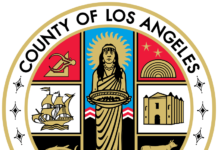“I Brake for Whales.”
In an agreement that might spawn the biggest bumper stickers in history, six international shipping companies have agreed to slow their huge container vessels down in the waters surrounding the Channel Islands to minimize collisions with whales.
The agreement, which was made last Monday, will not only protect whales but will have the added benefit of reducing fuel consumption as well as air pollution.
“I Brake for Whales.”
In an agreement that might spawn the biggest bumper stickers in history, six international shipping companies have agreed to slow their huge container vessels down in the waters surrounding the Channel Islands to minimize collisions with whales.
The agreement, which was made last Monday, will not only protect whales but will have the added benefit of reducing fuel consumption as well as air pollution.
Currently, merchant ships such as ore carriers, tankers and container vessels travel at approximately 20 miles per hour. Under the new agreement, these vessels will reduced their speed to about 14 miles per hour.
The participating companies include several of the heavy hitters in the maritime shipping industry, including COSCO (the Chinese Ocean Shipping Company), Hapag Lloyd, K Line, Maersk Line, Matson and United Arab Shipping Company.
Similar efforts near the ports of Long Beach and Los Angeles have already been implemented and are seeing high participation rates by shipping companies.
But this new policy isn’t all out of concern for our cetacean friends. The program is still in the trial stages and the shipping companies will receive $2,500 per transit at the slower speeds. Currently, there is enough money in the fund to cover 16 transits.
The entire West Coast of North America is a favorite feeding and breeding ground for numerous whales and other marine mammals.
Not only does the California Grey Whale like to frolic in the cool Pacific waters, but the region is home to several other species of whale including frequent visits by earth’s largest animal, the blue whale.
Although blue whales can reach 100 feet in length, they are no match for merchant ships that can reach 1,000 feet.
The slower speeds will also help cut emissions created by the huge diesel engines. According to a group called Our Air, fully 50 percent of the ozone-forming nitrogen oxides in Santa Barbara County are created by ships passing along the coast.









